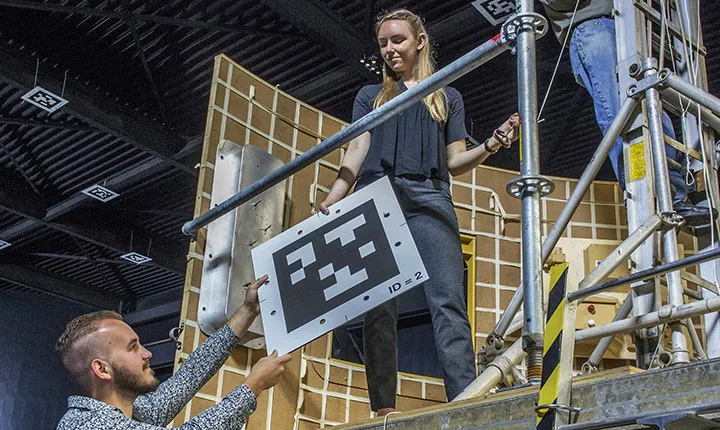Greta Studier '19 Helps NASA Reach for the Stars

Photo courtesy of NASA/Emmett Given
NASA: Interns Develop and Release Navigation Software Simulating Star Tracker Navigation
Interning at NASA puts students at the center of innovation and discovery. For two students at NASA’s Marshall Space Flight Center in Huntsville, Ala., this meant having the incredible opportunity not only to leave their mark on one of NASA’s most unique testing facilities, but also to release their own open-source software.
Interns Greta Studier '19, an engineering major from El Segundo, Calif., and Tristan Schuler, from George Mason University in Fairfax, Va., developed a navigation system that mimics the star-tracking navigation system that will be used in space on a small satellite, propelled by an electrostatic sail, currently in development at Marshall.
“To progress our research and development of electrostatic sails, we needed to come up with a localization navigation system to track our robotic prototype in the test lab,” said Studier. “The system we developed provides an inexpensive solution that allows us to track our robot within 5 centimeters of accuracy.”
Robotic Nano Air-bearing Simulators are being developed and evolved by interns under Marshall’s Technology Innovation Program to test the deployment of the electrostatic sail on Marshall’s Flat Floor Flight Robotics Lab—a state-of-the-art testing facility featuring an epoxy floor designed to allow engineers to simulate movements that help test the guidance, navigation, and control systems of spacecraft.
...
The duo had a series of 2-D barcodes, resembling QR codes, printed on foam board, and helped mount them at calculated intervals to the facility’s ceiling. A camera was positioned on top of the Nano Air-Bearing Simulator, a robot built by previous interns and modified by Schuler and Studier. The camera is programed to read the barcodes as the robot floats across the Flat Floor. Then, the robot relays its position back to the students. This process simulates how the Heliopause Electrostatic Rapid Transit System (HERTS) will use a star tracker in space as navigation to reach the heliopause.
While AprilNAV was developed from a need and with a specific purpose in mind, it can be used in many capacities. The students worked with the Office of Technology Transfer at Marshall to release their code to the public.



